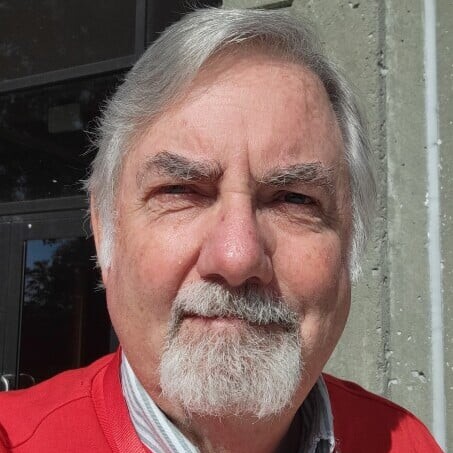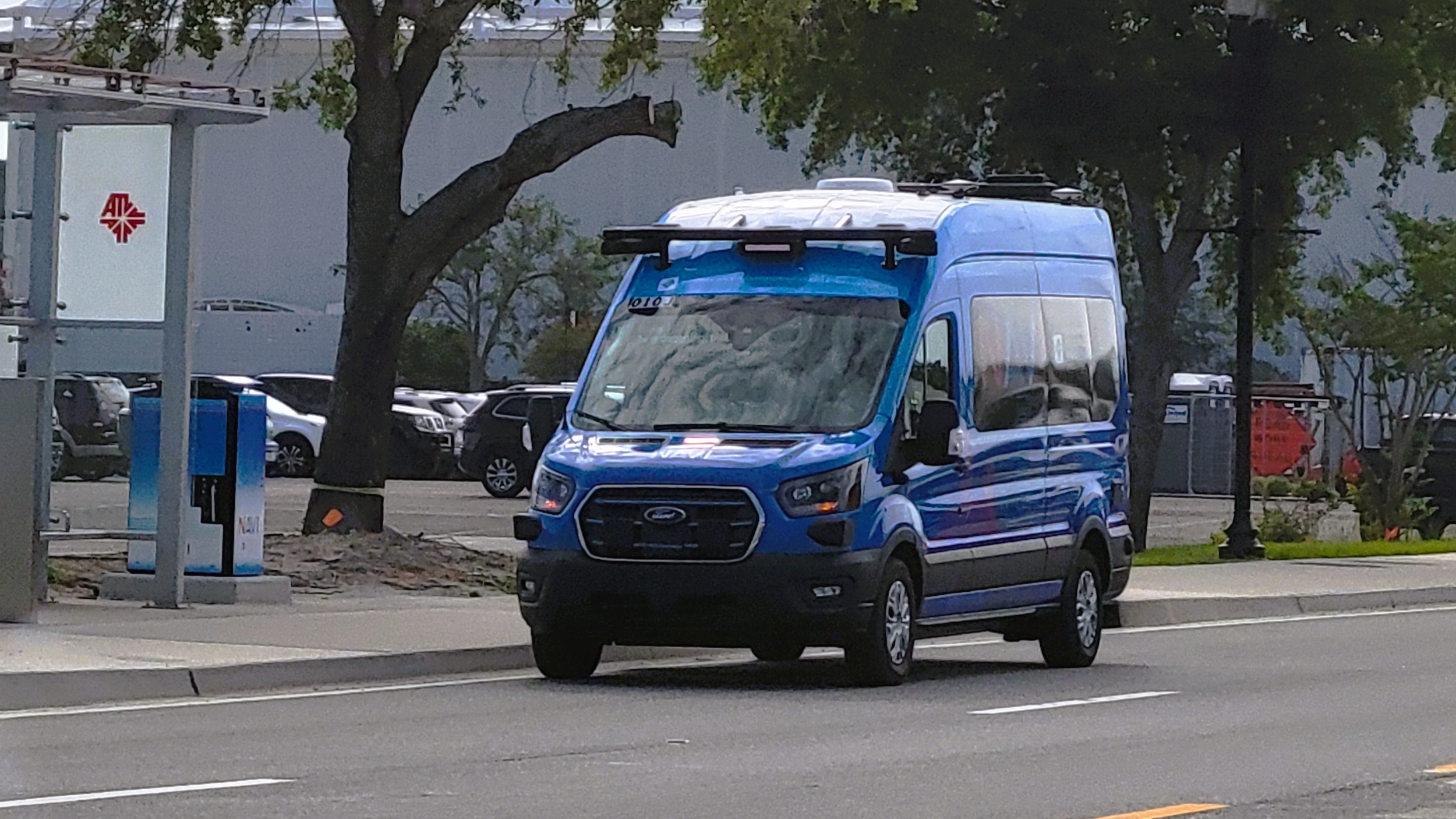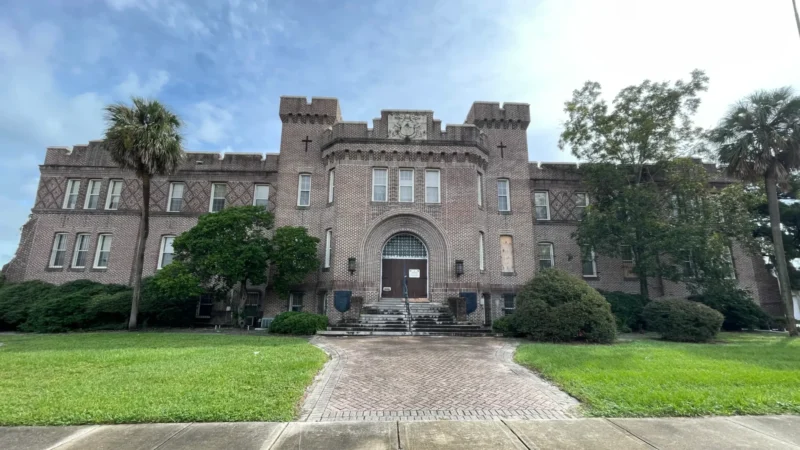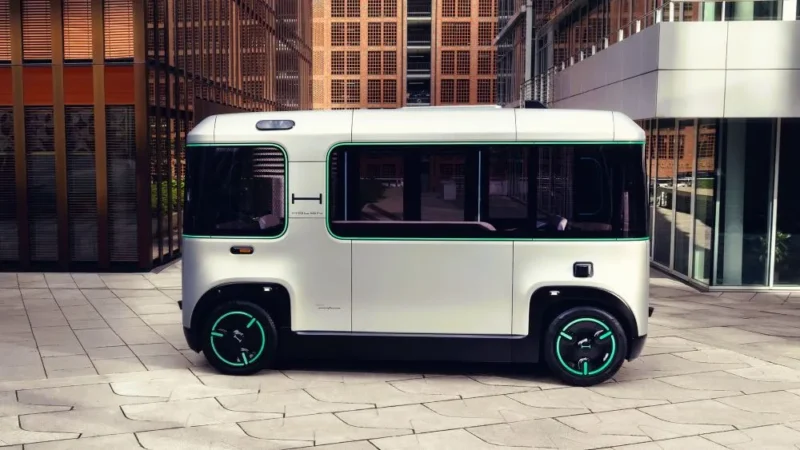Self-driving vehicles will take to the streets of Downtown Jacksonville on Monday as the city launches what it calls the first autonomous public transit system in the country.
Eight electric Ford vans will begin carrying passengers on a 3.5-mile loop between LaVilla and EverBank Stadium, driving themselves through traffic.
A Jacksonville Transportation Authority staffer will sit at the steering wheel, ready to take over if necessary.
The system is known as NAVI, short for Neighborhood Autonomous Vehicle Innovation. JTA has been testing the vehicles on the route since March, but the agency announced Friday that the system will begin serving the public Monday.
City officials made the announcement at VyStar Ballpark, next to one of 12 stops on the route, which JTA calls the Bay Street Innovation Corridor.
The vehicles will stop at stations along Pearl Street to EverBank Stadium, Bay Street and Gator Bowl Boulevard, their main route, as well as A. Philip Randolph Boulevard and Water Street. Stops also include EverBank Stadium’s Lot J and the planned Four Seasons Hotel.
Rides will be free through Sept. 30, when they will cost $1.75, the same as a one-way bus fare. NAVI’s shuttles will run every seven minutes from 7 a.m. to 7 p.m. Monday through Friday.
A decade of planning
JTA CEO Nat Ford said the system’s launch is the result of a decade of planning and experimentation.
“NAVI will modernize and expand transportation operations in this community, particularly Downtown Jacksonville,” Ford said. “For Jacksonville, this is an innovative mobility network which will provide residents and visitors with greater access to key destinations within a graphically developing Urban Core. For those outside Jacksonville, it is a blueprint for safe, seamless and sustainable public transportation.”
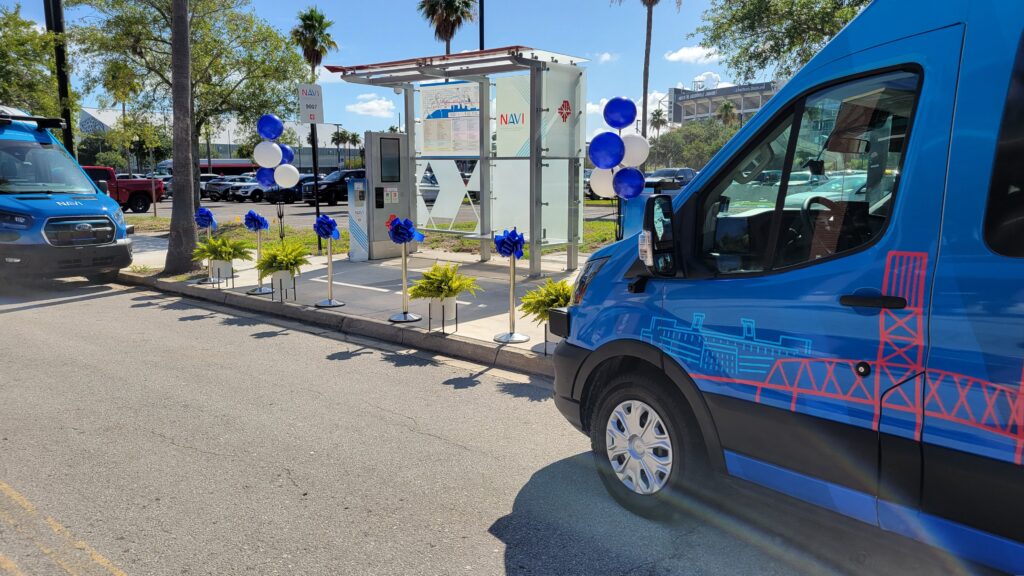
Mayor Donna Deegan said the automated shuttle shows Jacksonville is an innovative city that is adding new methods of mobility for its residents. Other cities see it as a model for deploying autonomous shuttle technology around their downtowns, Deegan said.
“And those cities will also look on with a little jealousy when they realize the economic boost we get from being an early adopter,” Deegan said. “You have the University of Florida campus on one end, the Sports and Entertainment District on the other end, with so much to do in between.”
The future or folly?
JTA has been planning an autonomous transit system for years, despite skepticism in some parts of the community.
Critics say the technology is not advanced enough to justify the cost — as much as $400 million for a full build-out. They also say the vehicles are too small and slow for mass transit and the proposed route ignores the Urban Core neighborhoods most likely to use public transit.
Some opponents have said the autonomous vehicles are more suited to limited shuttle uses.
Still, transit officials believe the system will put Jacksonville at the forefront of a transit revolution. NAVI is the transit authority’s first step in a bigger plan called the Ultimate Urban Circulator, or U2C, which ultimately would replace the Skyway and link the Northbank to San Marco, Brooklyn and Riverside.
JTA has tested various autonomous vehicles at a Westside test center, even using one in 2020 to transport COVID-19 tests around the Mayo Clinic campus. In fall 2023, the JTA and Florida State College at Jacksonville began using autonomous vehicles to move staff and students around its Downtown campus as a preview of the U2C.
Then JTA began testing its autonomous Ford E-Transit vans on city streets between LaVilla and EverBank Stadium. A control center opened on West Bay Street in April to monitor the self-driving vehicles.
The vehicles have 10 cameras, seven LIDAR sensors, plus sonar and radar guidance and detection systems to navigate around cars and pedestrians, interact with each other and react to stoplights and crosswalks.
“We have mapped precisely down to inches the precise route these vehicles travel on — imagine it as virtual rails,” said Joe Moye, founding CEO of BEEP, which designs autonomous and AI-enabled transportation like NAVI.
“We are driving a specific route, this Bay Street Innovation Corridor,” he said. “We know in any instant in time exactly where the vehicles are, exactly where the vehicles can be, and that helps us deploy these without additional infrastructure, a very, very safe and predictable format.”
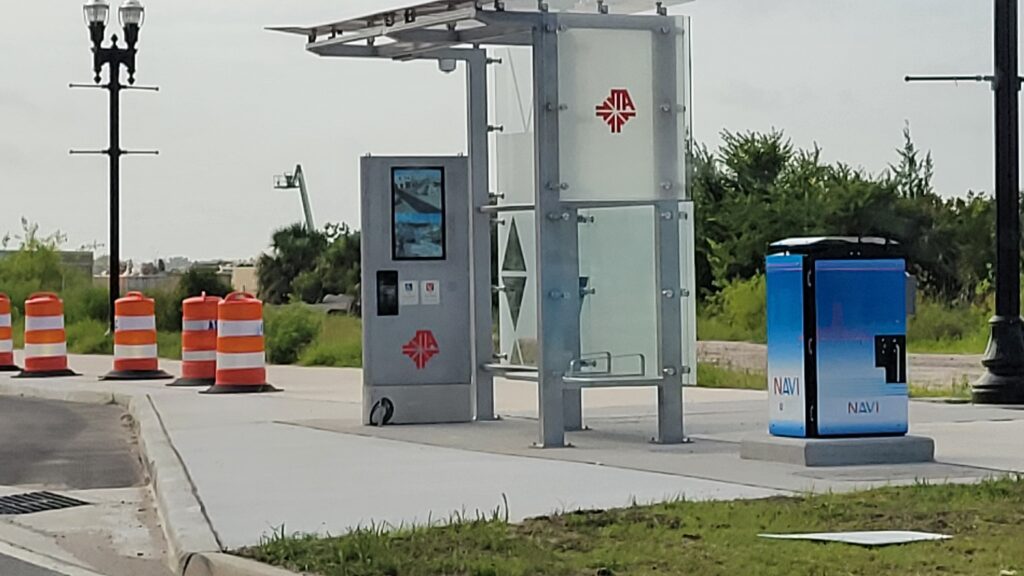
Pedestrian sensors and high-tech traffic lights have been installed along the shuttles’ route between the Jacksonville Center for the Performing Arts area to Everbank Field, Vystar Veterans Memorial Arena and VyStar Ballpark. The JTA’s covered U2C stops have benches and video screens that give directional information, while all vans have lifts for riders who are handicapped.
Down the road
NAVI represents Phase 1 of the Ultimate Urban Circulator and costs $65 million. The shuttles will go fully autonomous — without attendants — in six months to a year, “based on the performance and the number of times they have to intervene,” Ford said.
The Ford vans, which have passenger seatbelts, will ultimately be replaced by the 15-passenger Holon Mover electric vehicles sometime in 2027. Those boxy people movers will be produced at the company’s first autonomous vehicle factory in Florida — on Zoo Parkway on Jacksonville’s Northside, Ford said.
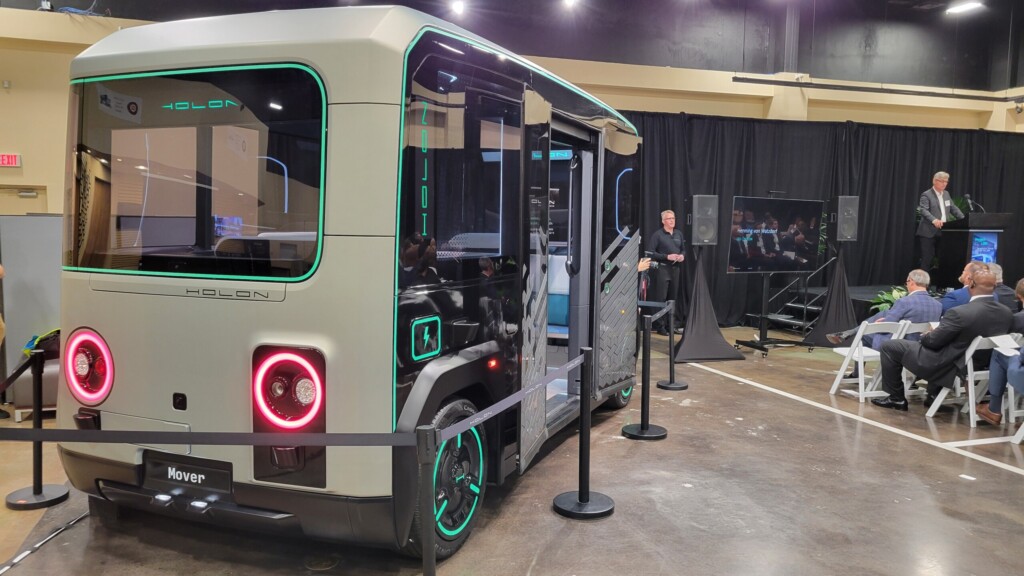
Holon’s $100 million investment in the Jacksonville plant will generate 763 direct and indirect jobs and a nearly $300 million economic benefit, and that makes the city a leader in autonomous vehicle development, JTA board vice chairperson Audra Wallace said.
“NAVI represents what happens when industry leaders come together with passion, innovation and expertise to a city that full embraces their potential,” Wallace said. “You have seen this play out with Holon establishing its North American manufacturing facility here in Jacksonville, leading to hundreds of millions of dollars in economic impact and hundreds of new jobs. Holon will draw mobility professionals to our city from around the world.”
The U2C’s second phase will convert the existing 2.5-mile Skyway system in Downtown and San Marco into an elevated roadway for the Holons. Ramps will allow them to travel from Bay Street to the overhead roadways, including stops at the Jacksonville Regional Transportation Center at LaVilla and across the Acosta Bridge to the Southbank.
The second phase is in planning and design stages. Its estimated $300 million cost will be partly funded through the extension of the local option gas tax. There is no construction date set yet, JTA officials said.
The U2C’s third phase will put the U2C on streets in the Brooklyn and Riverside areas, with an estimated $100 million price tag.
Ford said JTA is investigating the use of the NAVI shuttles on its ReadiRide shuttle service, which allows the public to book door-to-door rides by phone in 14 Jacksonville neighborhoods.
“There is going to be a rapid growth in terms of expansion on NAVI,” Ford said.
